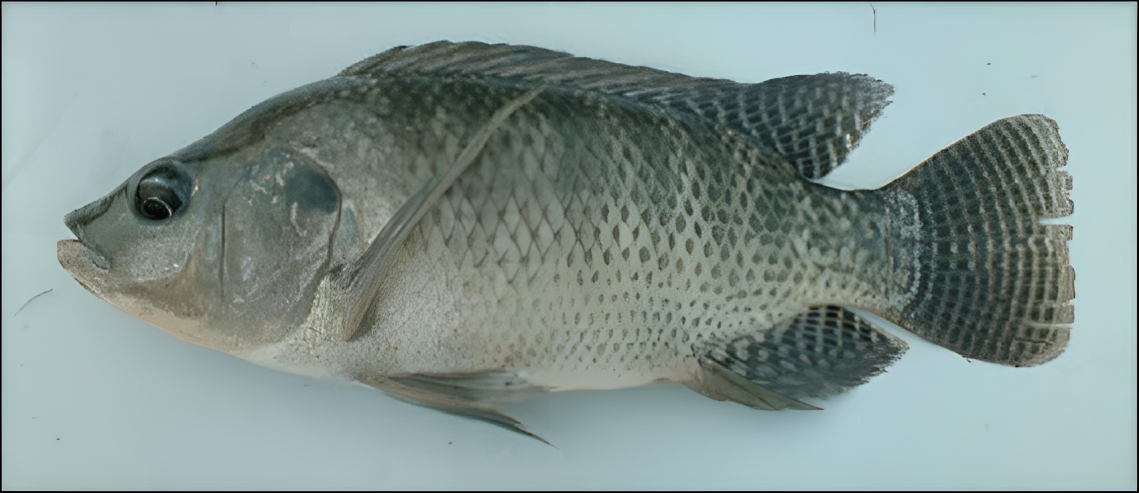Description

Copyright infringement not intended
Picture Courtesy: www.researchgate.net
Context: The discovery of Tilapia parvovirus (TiPV) in farm-bred tilapia in Ranipet district, Tamil Nadu, negatively affected the aquaculture industry in the State.
Tilapia Parvovirus (TiPV)
About
- Tilapia aquaculture, a major protein provider worldwide, faces a severe threat due to Tilapia Parvovirus (TiPV). The virus, identified in China in 2019, has rapidly spread to countries like Thailand and India, jeopardizing the global supply of tilapia protein.
- TiPV's high contagiousness has led to significant economic losses for fish farmers in affected regions. The virus's swift transmission has caused financial hardships in the tilapia industry, impacting the livelihoods of those dependent on aquaculture.
Characteristics of TiPV
- TiPV belongs to the Parvoviridae family and primarily affects tilapia fish species.
- The virus can cause a range of symptoms, including loss of appetite, lethargy, difficulty swimming, pale gills, haemorrhages on the skin and fins, and, in severe cases, death.
- TiPV, a DNA virus, exhibits a mortality rate of 30-50% in farms and 100% in laboratory settings, posing a significant threat to agricultural and research environments.

Transmission of TiPV
- TiPV spreads through direct contact with infected fish or contaminated water sources.
- Rapid transmission is common in densely populated fish ponds within aquaculture environments.
- The introduction of infected fish or contaminated equipment accelerates the virus's dissemination.
- Early detection and proactive prevention are crucial to controlling TiPV due to its highly contagious nature.
Symptoms and Impact on Tilapia Population
- TiPV symptoms, including loss of appetite and lethargy, weaken tilapia populations, compromising their overall health.
- Infected fish are prone to secondary infections due to weakened immune systems, amplifying mortality rates.
- TiPV impact not only results in high fish mortality but also reduces the quality of tilapia produced.
- It leads to economic losses for fish farmers, emphasizing the need for effective disease management strategies.
Preventive Measures
- Proper management of water quality, including regular monitoring of parameters such as pH, temperature, and oxygen levels, is crucial. Clean and well-maintained water reduces stress on fish, making them less susceptible to infections.
- Overcrowding in fish ponds creates stressful conditions, increasing the likelihood of disease outbreaks. Proper stocking density and regular thinning of populations can prevent the rapid spread of TiPV.
- Ensuring that fish are sourced from reputable and disease-free hatcheries minimizes the risk of introducing infected individuals into existing populations.
- Quarantining new fish before introducing them to established ponds allows farmers to monitor the health of incoming fish and prevent the spread of infections to the existing population.
- Dead fish should be promptly removed and properly disposed of to prevent the virus from contaminating the water and other fish.
- Implementing strict biosecurity measures, such as disinfection protocols and controlling access to aquaculture facilities, can prevent the introduction and spread of TiPV.

Conclusion
- Tilapia Parvovirus (TiPV) poses a serious threat to aquaculture, demanding urgent action. Strict biosecurity, water quality management, and research efforts are key to mitigating its impact and securing the future of tilapia farming. Collaborative research is vital for developing preventive strategies against TiPV outbreaks.
Must Read Articles:
FISHERIES SECTOR IN INDIA: https://www.iasgyan.in/daily-current-affairs/fisheries-sector-in-india-23
|
PRACTICE QUESTION
Q. What are the key challenges faced by the fisheries sector in India, and what strategies can be implemented to promote sustainable fishing practices and ensure the livelihoods of millions of people dependent on this industry?
|






